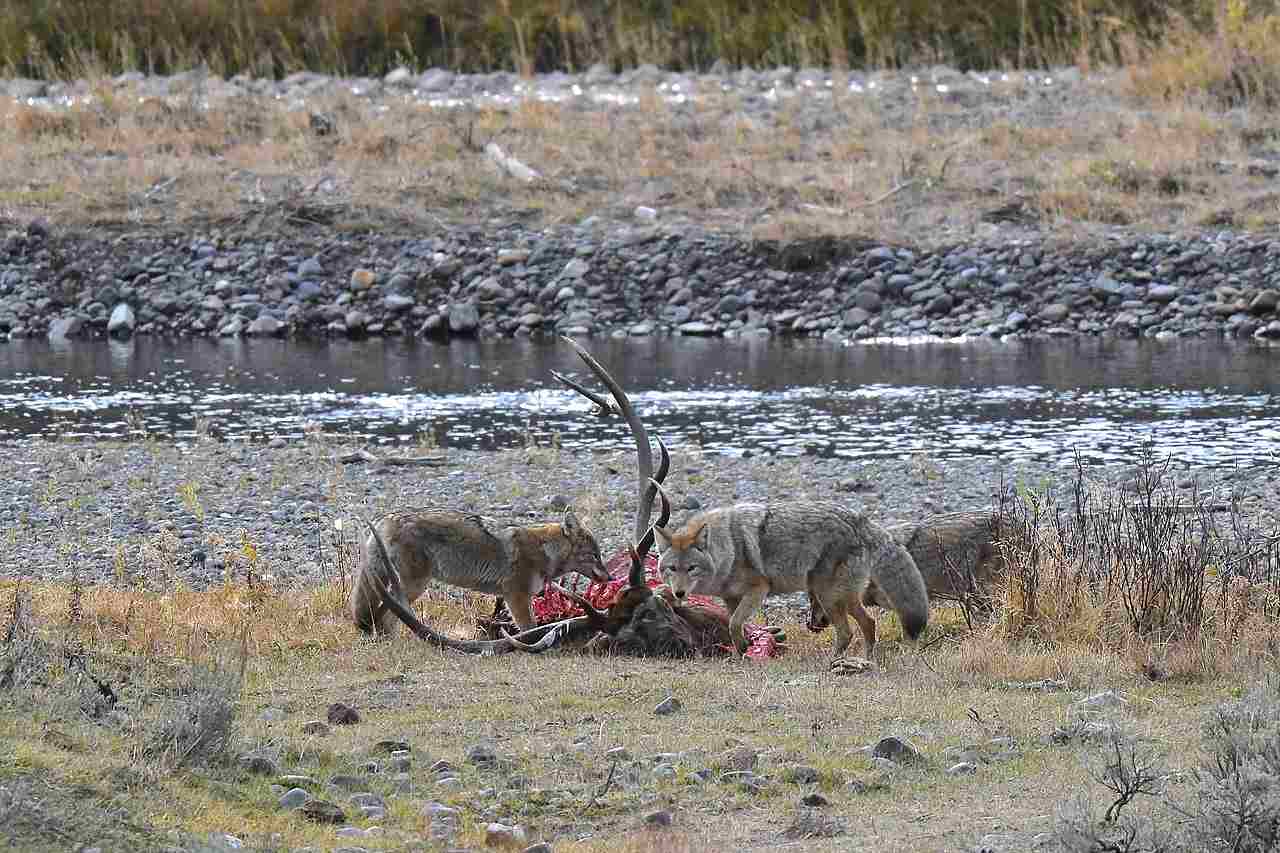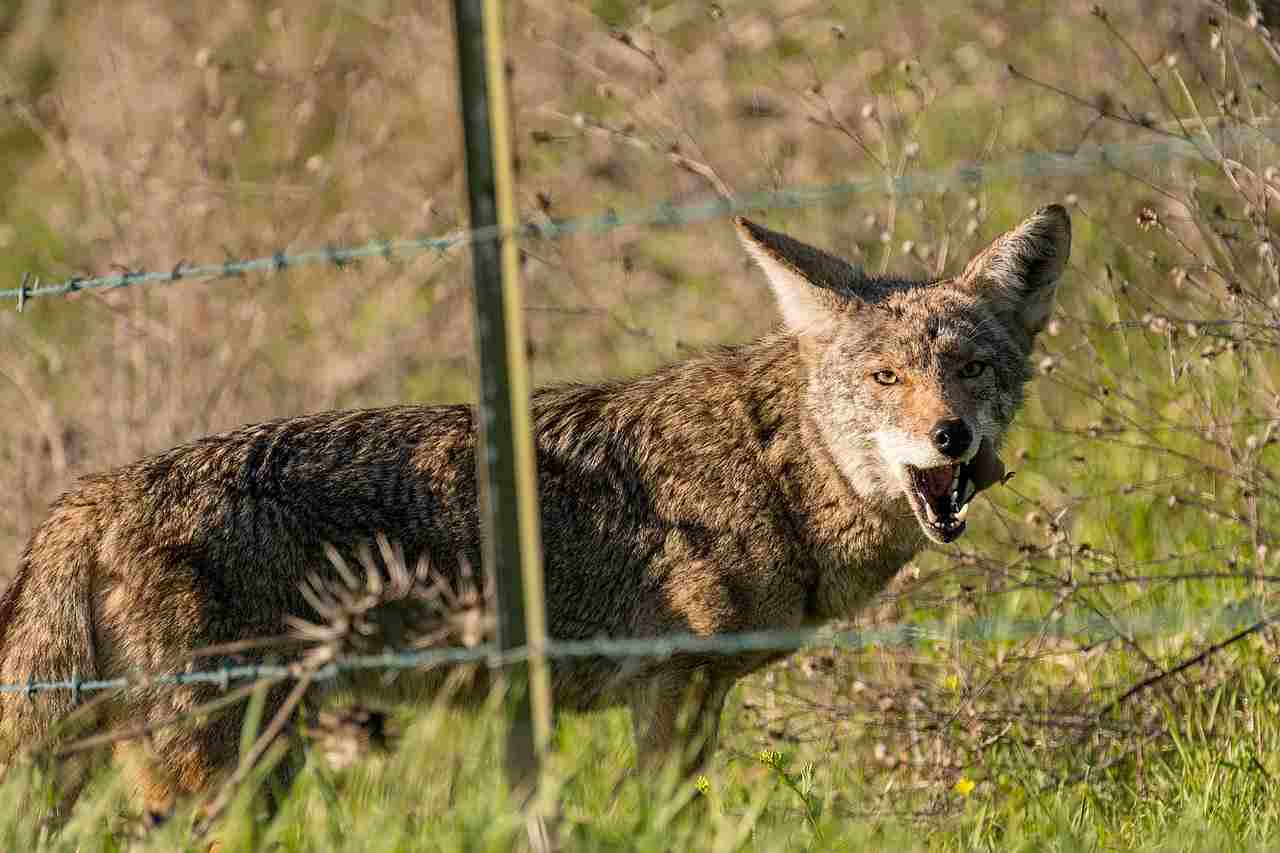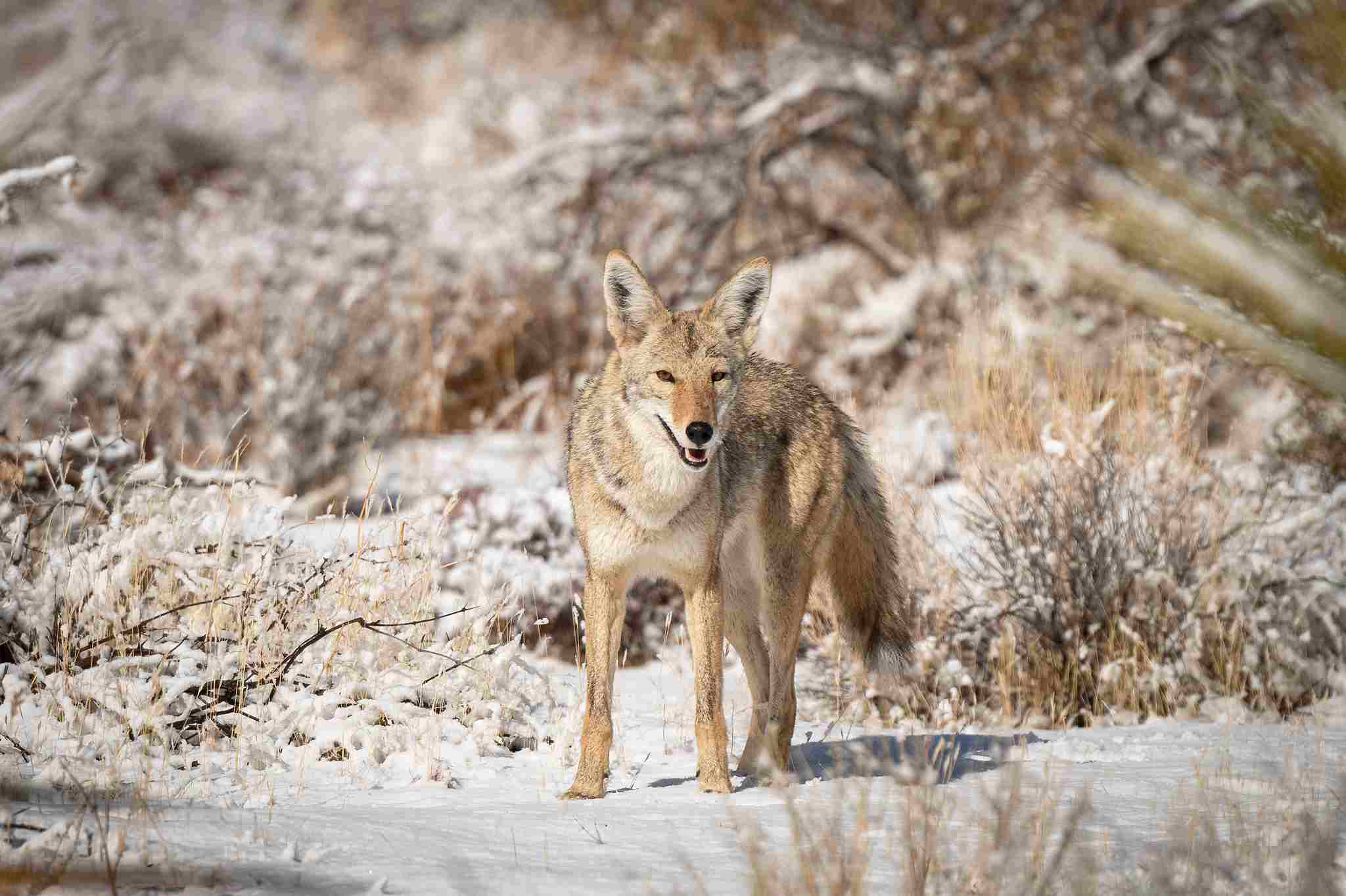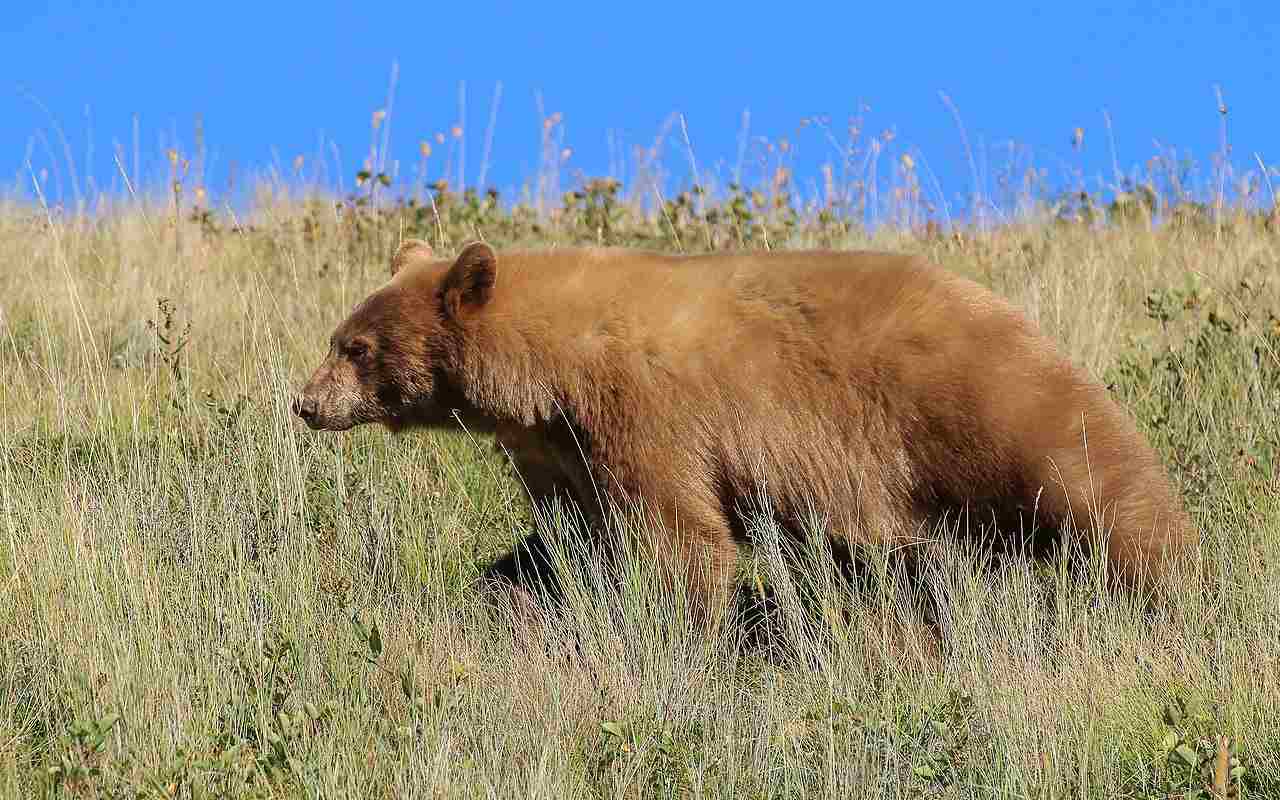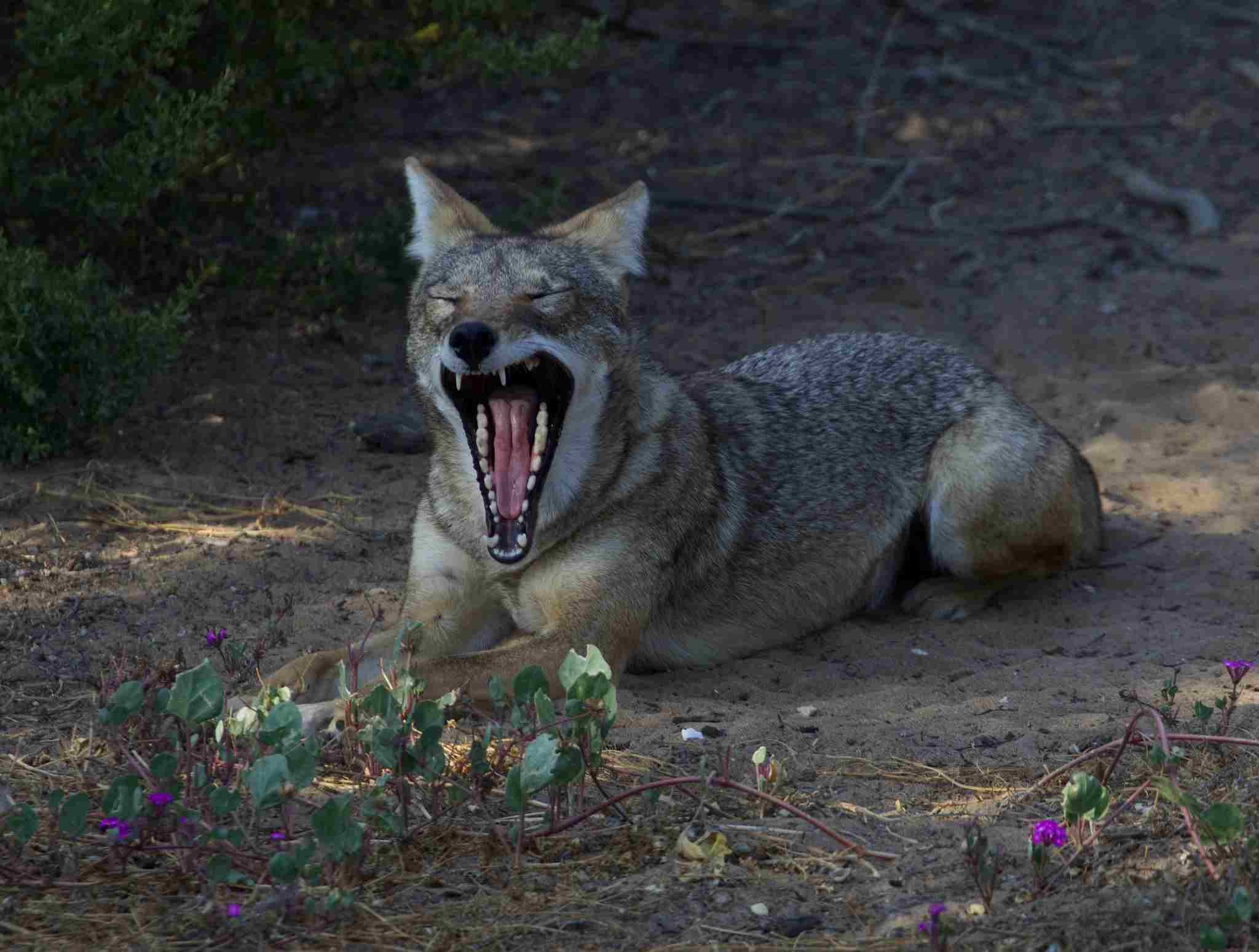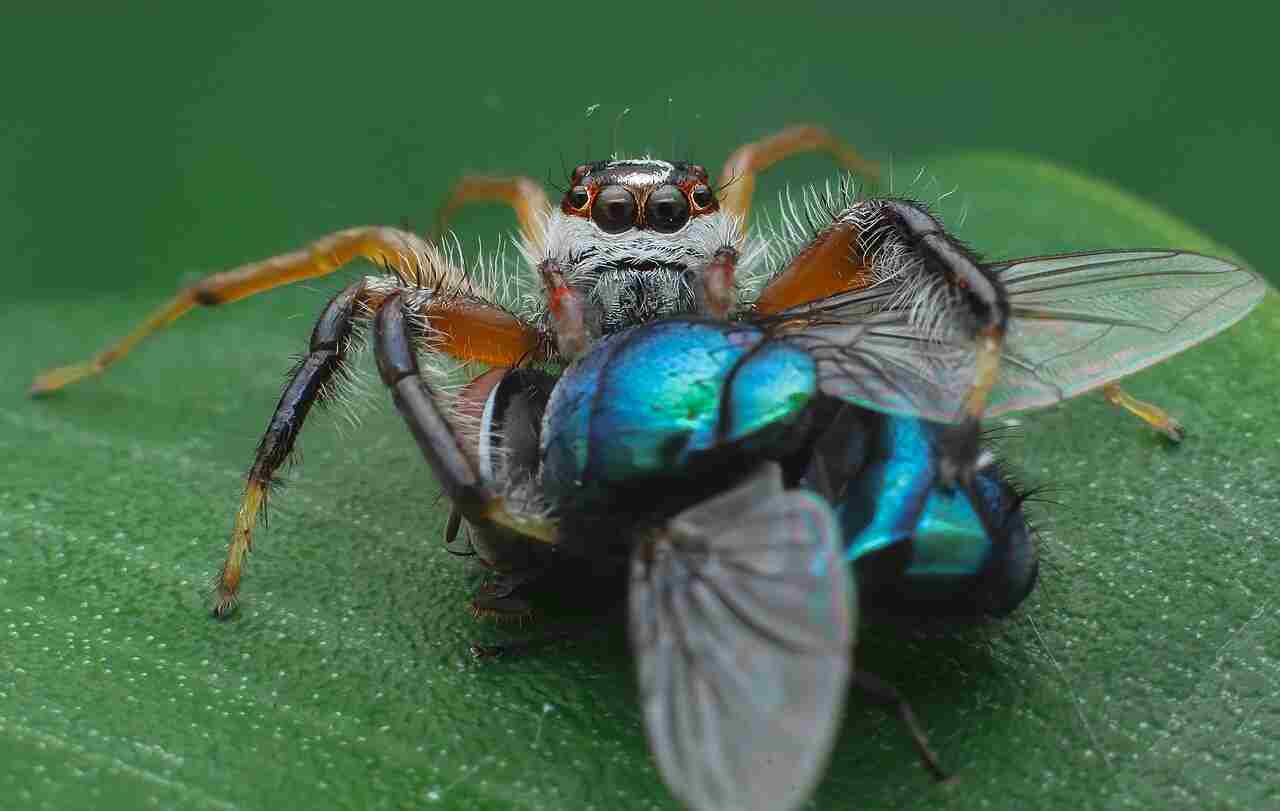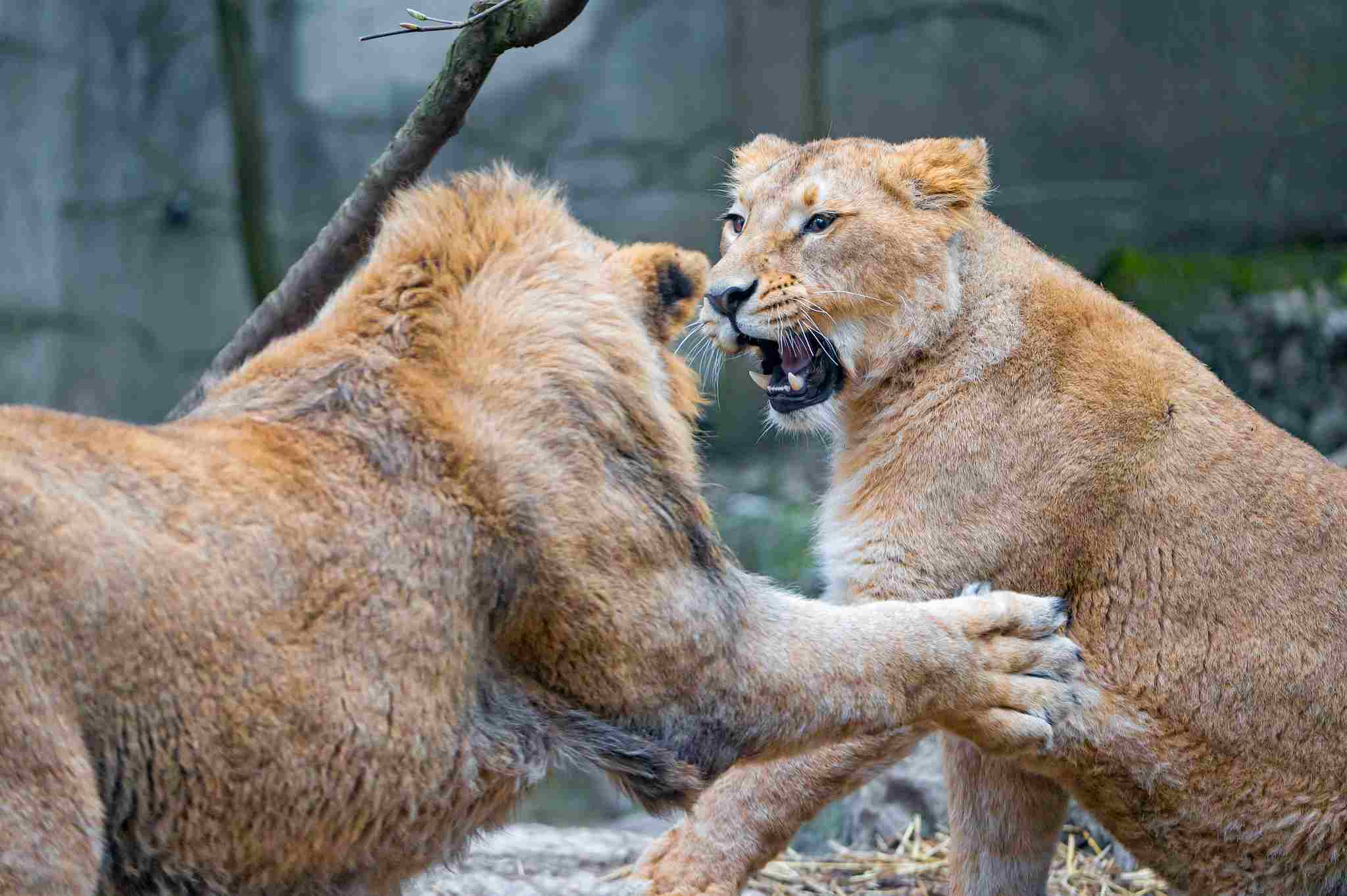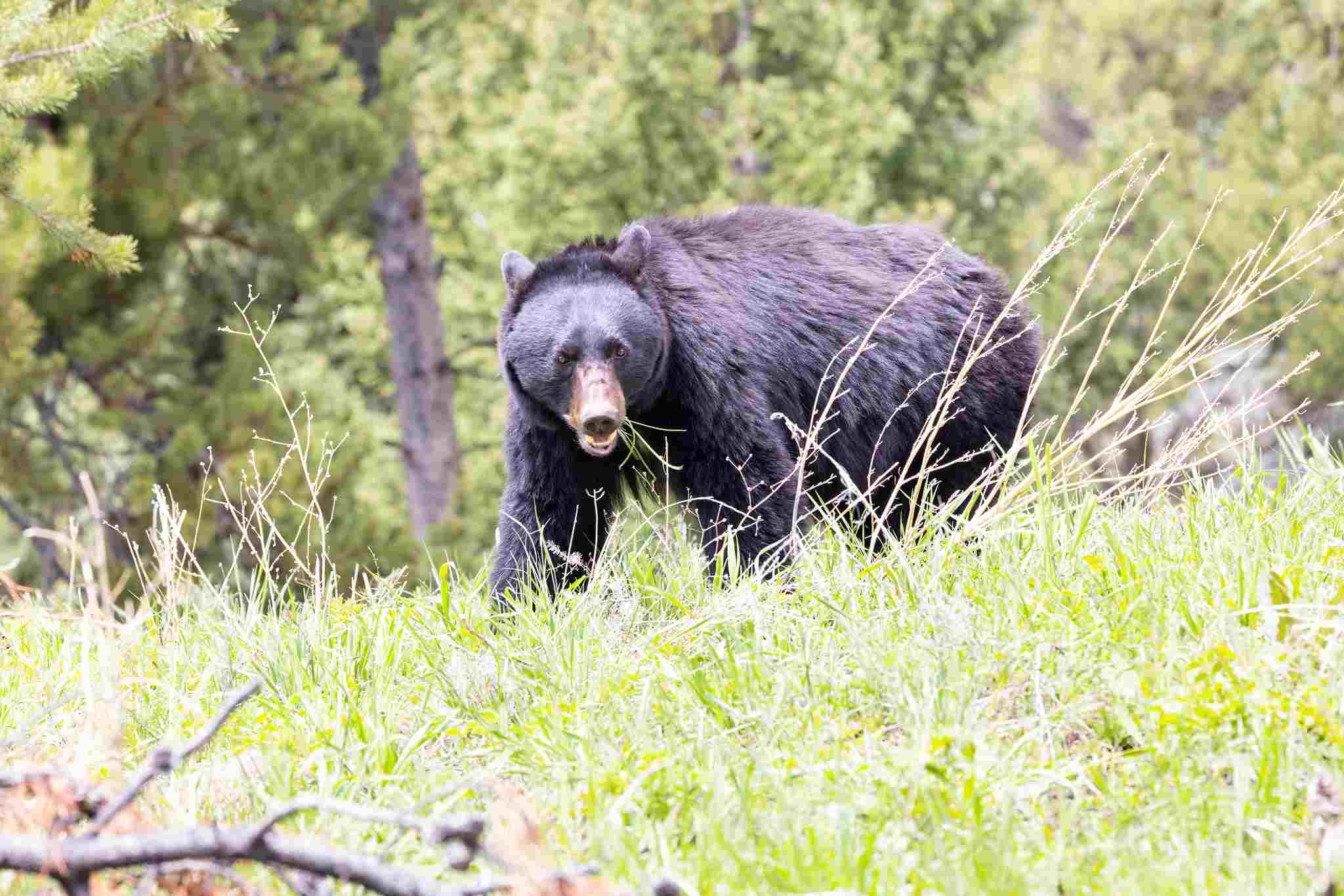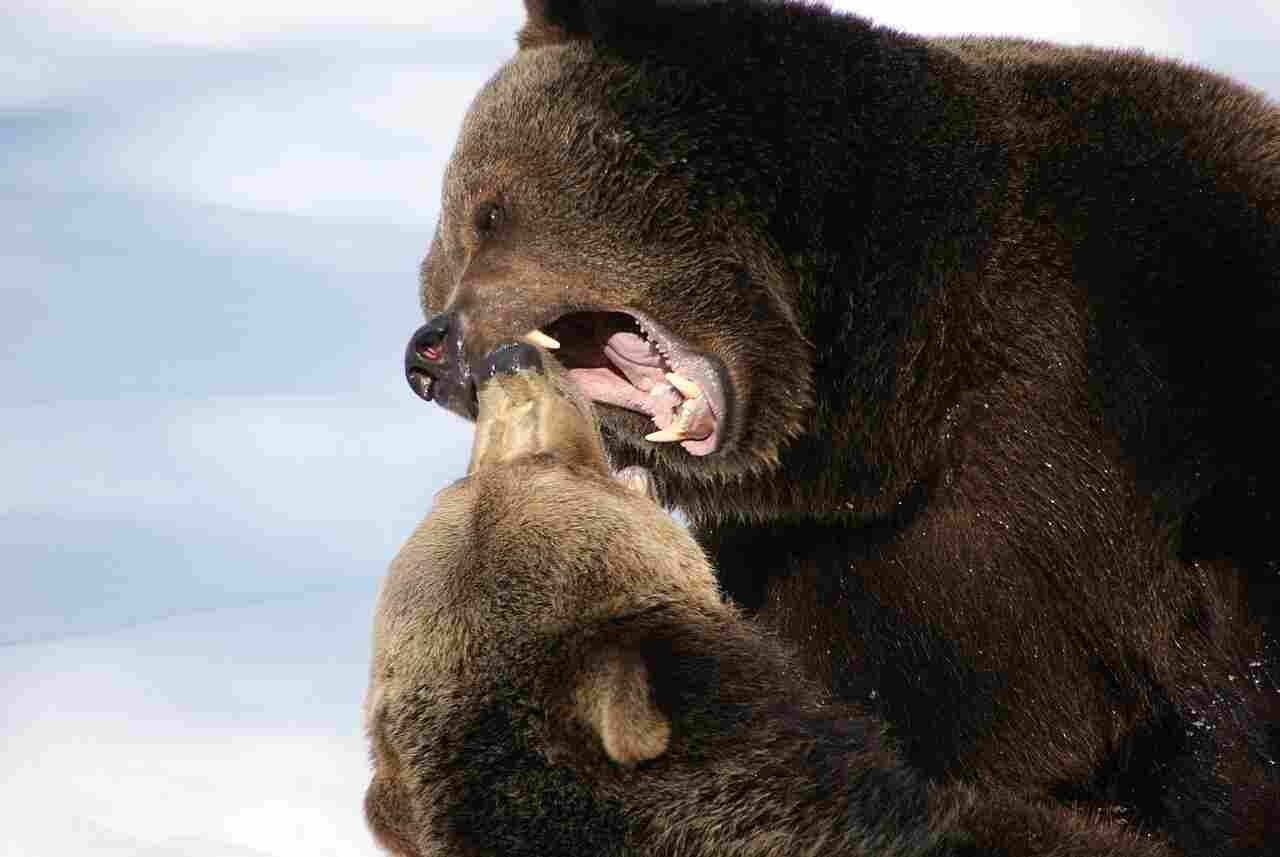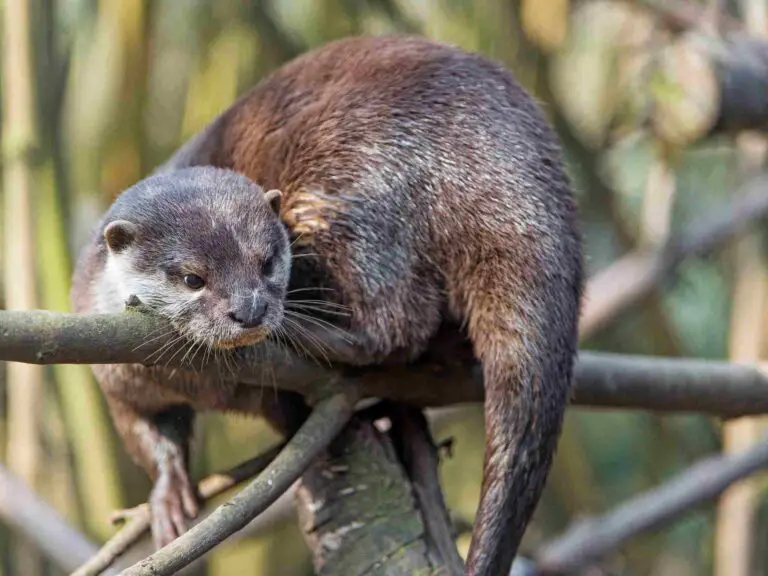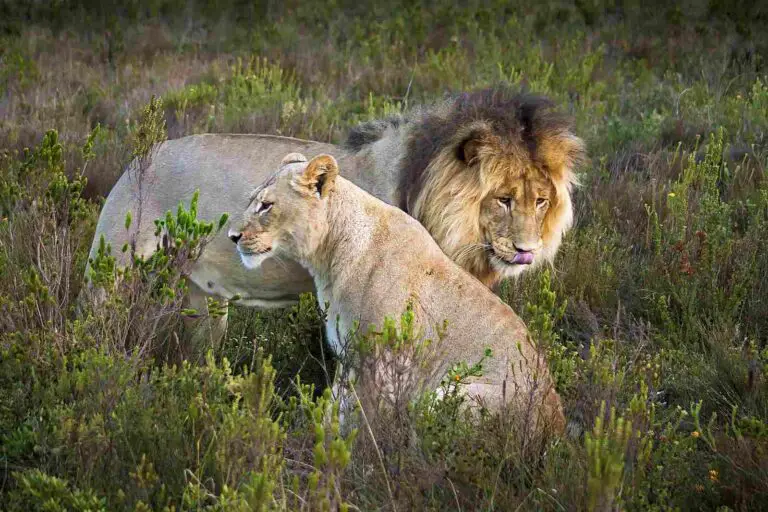23+ Dangerous Animals In Colorado And Their Characteristics
Examples of dangerous animals in Colorado are black bears, which can be aggressive when they have access to human food, and mountain lions, which are skilled hunters that may pose a risk if they feel threatened or are defending territory. Rattlesnakes are venomous snakes that can strike if startled, while coyotes are adaptable predators that may become aggressive if they become used to human presence. Moose and elk are large mammals that can become aggressive during mating season or when protecting their young. In addition, American bison can be dangerous due to their massive size, and Western Black Widow Spiders can cause severe pain with their venomous bites. Though these animals can be dangerous, with appropriate precautions and respect for wildlife, interactions can be minimized.
1. Black Bear
The black bear (Ursus americanus) is a common yet potentially dangerous animal found throughout Colorado’s diverse landscapes, from dense forests to mountainous regions. Though generally more timid and less aggressive than grizzly bears, black bears can pose significant threats to humans and property, especially when they become habituated to human food sources or feel threatened. Typically active from late spring to early fall, these omnivorous creatures forage for a wide range of food, including berries, nuts, insects, and even small mammals. Human encounters are more likely in areas where bears have easy access to garbage or other attractants. To minimize conflicts, Colorado residents and visitors should follow best practices for bear safety, such as securing trash cans, using bear-proof containers, and making noise when hiking in bear country to avoid surprising these powerful animals. If you encounter a black bear, it’s critical to stay calm, back away slowly, and avoid direct eye contact.
2. Mountain Lion
Mountain lions (Puma concolor), also known as cougars or pumas, are among Colorado’s most elusive and formidable predators. These large cats are skilled hunters, with adults weighing between 90 and 180 pounds. Mountain lions inhabit a wide range of environments, from dense forests to open foothills, and are known for their stealth and agility. While attacks on humans are rare, they can occur, particularly if a mountain lion feels threatened or if it’s defending its territory. When hiking or living in mountain lion territory, it’s important to be aware of your surroundings and keep small children and pets close by. If you encounter a mountain lion, make yourself appear larger, speak firmly, and back away slowly without turning your back.
3. Rattlesnake
Rattlesnakes are venomous snakes found throughout Colorado, with the Western rattlesnake (Crotalus oreganus) being the most common. These snakes are known for the distinctive rattle at the end of their tails, which they use as a warning when threatened. Rattlesnakes prefer dry, rocky habitats, often hiding in crevices or underbrush. Although they are generally shy and will avoid humans, a startled or threatened rattlesnake may strike. It’s essential to watch your step while hiking in rattlesnake territory and avoid reaching into hidden areas. If bitten, seek medical attention immediately, as rattlesnake venom can cause severe pain and tissue damage.
4. Coyote
Coyotes (Canis latrans) are adaptable predators found throughout Colorado, from urban areas to remote wilderness. They are opportunistic feeders, consuming a diet that includes small mammals, birds, fruits, and even garbage in urban settings. Coyotes can pose a threat to pets and, in rare cases, to humans, especially when they become habituated to human presence. It’s important to keep pets secure and avoid feeding coyotes to reduce the risk of conflicts. If you encounter a coyote, make loud noises, wave your arms, and throw small objects to scare it away.
5. Bobcat
Bobcats (Lynx rufus) are elusive, medium-sized wildcats that inhabit various regions of Colorado, including forests, deserts, and suburban areas. Known for their distinctive tufted ears and short “bobbed” tails, bobcats are skilled hunters that prey on small mammals and birds. While they generally avoid humans, they can become aggressive if cornered or if they feel their young are threatened. To prevent bobcat encounters, avoid leaving pet food outside and keep pets indoors or in secure enclosures. If you encounter a bobcat, remain calm, make noise to appear more intimidating, and give it a clear path to escape.
6. Moose
Moose (Alces alces) are the largest members of the deer family, with males weighing up to 1,500 pounds. Found in Colorado’s mountainous areas, moose are often seen near water sources and in dense forests. Although generally calm, moose can become extremely dangerous if they feel threatened or if they are protecting their young. They are known to charge at perceived threats, and their size and strength make them formidable opponents. To avoid conflicts with moose, give them plenty of space, especially during mating season or when they have calves. If a moose charges, seek cover and do not attempt to fight back.
7. Elk
Elk (Cervus canadensis) are large members of the deer family commonly found in Colorado’s mountain regions. During the fall rut, male elk, or bulls, become particularly aggressive and territorial as they compete for mates. This behavior can lead to dangerous encounters with humans who venture too close. To avoid conflicts, observe elk from a safe distance and never approach them, especially during the rut or calving season. In urban areas where elk may wander, residents should secure trash and avoid sudden movements if an elk is nearby. If you find yourself too close to a bull elk, retreat slowly without turning your back.
8. Prairie Rattlesnake

The prairie rattlesnake (Crotalus viridis) is one of the most widespread venomous snakes in Colorado, typically found in open grasslands and prairies. These snakes have a characteristic rattle and use it as a warning signal when threatened. Although they usually avoid humans, they can become aggressive if startled or cornered. To reduce the risk of encounters, hikers should stick to established trails and watch for snakes sunning themselves on rocks or trails. If bitten by a prairie rattlesnake, seek immediate medical attention, as their venom can cause severe pain, swelling, and other serious health complications.
9. Brown Recluse Spider
The brown recluse spider (Loxosceles reclusa) is a venomous spider found in parts of Colorado, known for its distinctive violin-shaped mark on its back. While typically shy and reclusive, these spiders can deliver a painful bite when provoked, leading to severe tissue damage or necrosis in some cases. Brown recluse spiders often hide in dark, undisturbed areas like closets, basements, or attics. To avoid bites, check clothing and shoes before wearing them, and take care when reaching into dark places. If bitten, seek medical attention promptly, as treatment may require antibiotics and other medical interventions.
10. Western Black Widow Spider
The western black widow spider (Latrodectus hesperus) is a venomous spider found throughout Colorado, easily recognized by its glossy black body and distinctive red hourglass marking on its abdomen. Though generally shy, black widow spiders can be dangerous when they feel threatened. Their venom contains neurotoxins that can cause severe pain, muscle cramps, and other serious symptoms. Black widows often reside in dark, undisturbed places like sheds, garages, or woodpiles. To minimize the risk of bites, wear gloves when handling firewood or cleaning dark areas, and inspect these locations before reaching in. If bitten, seek medical attention immediately.
11. American Bison
The American bison (Bison bison), also known as buffalo, is a massive mammal native to the Great Plains and parts of Colorado. Although they are primarily herbivores, bison are highly protective of their territory and can be aggressive if they feel threatened. Adult bison can weigh up to 2,000 pounds, making them extremely powerful. Visitors to areas with bison should maintain a safe distance and avoid sudden movements or loud noises. If a bison charges, it’s best to find shelter or stay in a vehicle, as these animals can be unpredictable and cause significant injury with their massive size and strength.
12. Bald Eagle
The bald eagle (Haliaeetus leucocephalus) is a majestic bird of prey found in Colorado’s forests and near large bodies of water. With a wingspan of up to 7 feet, bald eagles are formidable hunters, preying on fish, small mammals, and other birds. Though they rarely pose a direct threat to humans, they can become aggressive if their nests or young are disturbed. To avoid conflicts, maintain a respectful distance from eagle nesting sites and avoid making loud noises near them. If you’re fortunate enough to see a bald eagle in the wild, admire it from a distance and never attempt to approach or feed it.
13. Bull Elk
Bull elk, the mature male members of the elk species, are known for their impressive antlers and aggressive behavior during the fall rutting season. Found throughout Colorado’s mountain regions, bull elk compete for mates during this period, leading to aggressive displays and sometimes dangerous encounters with humans who get too close. These large animals can weigh up to 1,100 pounds, and their powerful antlers can be used as weapons. To stay safe, observe bull elk from a significant distance, especially during the rut. If you encounter one that appears aggressive, back away slowly without turning your back or making sudden movements.
14. Grizzly Bear (historically, not currently resident)
Historically, grizzly bears (Ursus arctos horribilis) were once part of Colorado’s wildlife landscape but are no longer resident in the state due to habitat loss and overhunting. Known for their massive size and distinctive humped back, grizzlies are among the most powerful and dangerous predators in North America. While they no longer pose a direct threat in Colorado, the grizzly bear’s legacy serves as a reminder of the importance of wildlife conservation and the potential risks that come with living in bear country. Their absence underscores the need to protect other wildlife species to maintain a balanced ecosystem and ensure that encounters with wildlife remain safe for both humans and animals.
15. Lynx
Lynx (Lynx canadensis) are elusive wildcats found in the boreal forests and high-altitude regions of Colorado. Recognized by their tufted ears and thick fur, lynx are adept hunters, primarily preying on snowshoe hares and other small mammals. While generally shy and reclusive, lynx may become aggressive if cornered or threatened. To avoid conflicts, keep a respectful distance from these animals and refrain from approaching them, especially during their mating season or when they have young. If you encounter a lynx, back away slowly without making sudden movements or loud noises, allowing it to retreat to safety.
16. Wolverine
The wolverine (Gulo gulo) is a rare and formidable carnivore occasionally found in Colorado’s remote mountainous areas. Known for its stocky build and fierce demeanor, wolverines are skilled hunters and scavengers. Though typically solitary and reclusive, wolverines can be aggressive when defending their territory or food sources. Because of their rarity, encounters with wolverines are infrequent, but if you happen to see one, it’s best to admire from a distance and avoid making loud noises or sudden movements. If a wolverine feels threatened, it may defend itself aggressively, so maintaining a safe distance is crucial.
17. Wild Boar
Wild boar (Sus scrofa), also known as feral hogs, are invasive species found in certain parts of Colorado. These animals are highly adaptable and reproduce rapidly, causing significant damage to crops and native vegetation. Wild boars are known for their aggressive behavior, especially when cornered or when protecting their young. They have sharp tusks and can weigh up to 300 pounds, making them a danger to humans and pets. If you encounter a wild boar, keep a safe distance and avoid sudden movements. In areas with wild boar populations, landowners may need to take measures to control their numbers and reduce the risk of encounters.
18. Great Horned Owl
The great horned owl (Bubo virginianus) is a powerful bird of prey found throughout Colorado. Known for its prominent ear tufts and deep hooting call, the great horned owl is a skilled hunter, preying on small mammals, birds, and reptiles. While not typically aggressive toward humans, these owls can become protective of their nests and young. They have powerful talons and sharp beaks, which can cause injury if they feel threatened. To avoid conflicts, give great horned owls plenty of space, especially during their nesting season, and avoid disturbing their habitats. If you encounter a great horned owl near its nest, back away slowly and quietly to avoid provoking an attack.
19. Golden Eagle
The golden eagle (Aquila chrysaetos) is one of the largest and most powerful birds of prey in Colorado, with a wingspan of up to 7 feet. These majestic raptors are skilled hunters, preying on small to medium-sized mammals and occasionally other birds. Although they don’t usually threaten humans, golden eagles can become aggressive when defending their nests or territories. Their sharp talons and strong beaks can cause severe injury if they feel threatened. To avoid conflicts, keep a respectful distance from golden eagles and their nesting sites, especially during the breeding season. If you spot a golden eagle, enjoy it from a distance and avoid disturbing its habitat.
20. Red Fox
The red fox (Vulpes vulpes) is a cunning and adaptable predator found throughout Colorado, from urban areas to rural landscapes. They typically avoid humans but may pose a threat to small pets and livestock. Red foxes are known for their distinctive red fur and bushy tails, as well as their keen sense of hearing and smell. Although not aggressive toward humans, they can become bold if habituated to human food sources. To reduce the risk of encounters, secure garbage and avoid feeding foxes. If you encounter a red fox, do not approach, and keep pets on leashes to prevent conflicts.
21. Gray Wolf
The gray wolf (Canis lupus) was once native to Colorado but was extirpated by the early 20th century. However, efforts to reintroduce wolves to the state are underway, and their presence could pose potential risks to livestock and pets. Gray wolves are social animals that live in packs and are skilled hunters, preying on large mammals like elk and deer. While human attacks are rare, wolves can be territorial and aggressive when defending their pack or food sources. To stay safe, avoid approaching wolves and never feed them. If wolves are reintroduced, maintaining a safe distance and respecting their territory will be crucial.
22. Western Hog-Nosed Snake
The western hog-nosed snake (Heterodon nasicus) is a non-venomous snake found in Colorado’s prairies and grasslands. Recognized by its upturned snout, this snake is generally harmless to humans, but it can exhibit aggressive behavior when threatened, including hissing and playing dead. Despite its dramatic displays, the western hog-nosed snake is not dangerous, and its bites are typically non-venomous. To avoid conflicts, avoid provoking or disturbing these snakes. If you encounter a western hog-nosed snake, observe it from a safe distance, as it will likely flee when given the opportunity.
23. Longnose Snake
The longnose snake (Rhinocheilus lecontei) is a non-venomous snake found in Colorado’s arid and semi-arid regions. Known for its distinctive long snout and banded coloration, the longnose snake is typically harmless to humans. However, when threatened, it may exhibit defensive behaviors such as coiling and vibrating its tail, mimicking a rattlesnake. Although not aggressive, longnose snakes can be startling due to their resemblance to venomous snakes. To avoid conflicts, avoid approaching or provoking these snakes. If you encounter a longnose snake, give it space to retreat, as they usually prefer to avoid confrontation.
24. Short-Horned Lizard
The short-horned lizard (Phrynosoma hernandesi) is a small, spiny reptile found in Colorado’s dry, rocky habitats. Despite its fearsome appearance, this lizard is harmless to humans and primarily feeds on ants and other insects. The short-horned lizard is known for its unique defense mechanism of squirting blood from its eyes when threatened. Although not dangerous, this behavior can be startling. To avoid disturbing short-horned lizards, observe them from a distance and avoid handling or provoking them. If you encounter one, admire its unique characteristics without causing it stress or harm.
| Animal | Description |
| Black Bear |
Found in forests and mountains; can be aggressive when habituated to human food or threatened.
|
| Mountain Lion |
Elusive and skilled hunter; can pose a threat if threatened or defending territory.
|
| Rattlesnake |
Venomous; warns with a rattle sound; strikes if startled.
|
| Coyote |
Adaptable; can be aggressive when habituated to human presence; poses a threat to pets and livestock.
|
| Bobcat |
Elusive wildcat; can be aggressive when threatened or defending young.
|
| Moose |
Largest deer family member; dangerous when threatened or protecting young.
|
| Elk |
Aggressive during the rutting season; dangerous when threatened or protecting territory.
|
| Prairie Rattlesnake |
Venomous; found in prairies and grasslands; strikes if startled.
|
| Brown Recluse Spider |
Venomous; shy but can cause severe tissue damage with its bite.
|
| Western Black Widow Spider |
Venomous; recognizable by the red hourglass on its abdomen; bite can cause severe pain.
|
| American Bison |
Massive herbivore; aggressive if threatened; dangerous due to size and strength.
|
| Bald Eagle |
Majestic bird of prey; can become aggressive when defending its nest.
|
| Bull Elk |
Aggressive during the rutting season; dangerous due to powerful antlers.
|
| Grizzly Bear |
Historically present in Colorado; extremely dangerous due to size and aggression; currently not resident.
|
| Lynx |
Elusive wildcat; can be aggressive if cornered or threatened.
|
| Wolverine |
Rare carnivore; aggressive when defending territory or food sources.
|
| Wild Boar |
Invasive species; aggressive when threatened; can cause significant damage to crops and property.
|
| Great Horned Owl |
Powerful bird of prey; can be aggressive when protecting its nest.
|
| Golden Eagle |
Large bird of prey; aggressive when defending its territory or food source.
|
| Red Fox |
Adaptable predator; can become aggressive when habituated to human presence; poses a threat to small pets and livestock.
|
| Gray Wolf |
Historically native to Colorado; efforts for reintroduction are ongoing; dangerous if threatened or when defending territory or food sources.
|
| Western Hog-Nosed Snake |
Non-venomous; can exhibit aggressive behavior when threatened but not dangerous to humans.
|
| Longnose Snake |
Non-venomous; mimics rattlesnake behavior when threatened; not dangerous to humans.
|
| Short-Horned Lizard |
Harmless lizard; known for its unique defense mechanism of squirting blood from its eyes when threatened.
|
